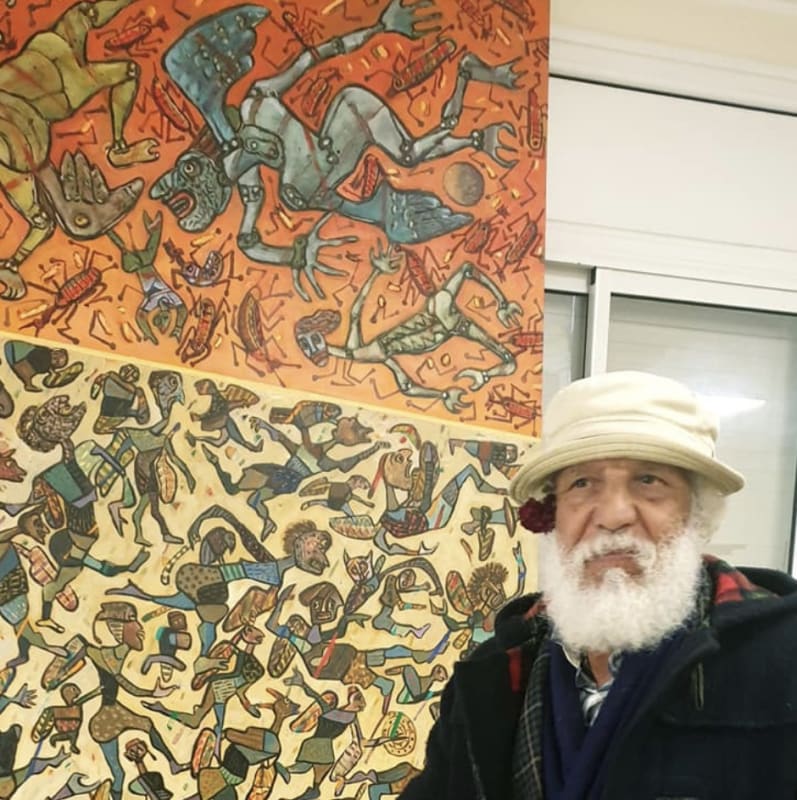Born in 1949 in Nabeul, Tunisia, Triki studied at the Ecole des Beaux-Arts in Tunis before pursuing a residency at the Cité Internationale des Arts de Paris. He started his career living and working between Tunis and Paris in the mid-1970s and 1980s. Triki retired in the natural world of his native town of Lezdine in north-eastern Tunisia, grounded in the rural community. Triki's paintings and engravings are filled with mystical symbols and patterns inspired by his Berber heritage. His abstract surreal compositions are filled with flora and animal forms, reflecting his experience of working on the land, but also with popular figures wearing archaic outfits. Although connections can be made with the imaginative world of the Swiss artist Paul Klee, Triki draws principally on his own country's oral tradition of folk stories. Gouider triki stays away from all kinds of public events and leads a life in harmony with nature, an existence that is both active and contemplative and that he fiercely protects from visitors or unsolicited perturbations. To avoid being disturbed, he has build a hidden back door to his house that allows him to escape into the surroundings nature. He doesn’t own a phone and the only mean of communication for him with the outside world, was a phone of a nearby village café where Triki`s usually goes at the end of his day`s work. Yet, before moving to the countryside, Triki`s had led an eventful life in Paris from 1971 to 1980. While furthering his studies at the fine arts school. He was quick to feel at home in the French capital, he socialised at various venues and dived headfirst into the post may 68 atmosphere that reigned in the artistic milieu of the era. This foundational life experience fostered Triki`s sense of freedom and non-conformism, and encouraged him to pursue his artistic ideal by receiving training in the workshops of Lagrange and couteaux at the beaux arts, where he mastered wood engraving and etching with the two teacher respectively. he his considered as one the most talented etcher of his generation with a unique imagination. Very early in his career, Triki`s exhibited skills as an engraver and tirelessly experimented with different techniques, even subverting them to better suit his bubbling imagination. Triki`s drew his inspiration from his childhood memories, making the eerie and the fantastical cohabit with the familiar – an approach that also reveals his admiration for the work of Paul Klee and Marc Chagall. He etched his copper plates with signs and forms in a quick and steady hand. His prints were often populated by allusive forms, which he handed coloured with lyrical gesturality imbuing them with a remarkable poetic intensity. His work has been widely exhibited in Tunisia and abroad since the mid-1960s, including at the Musee d'Art Moderne de Paris – a solo show at the Centre Pompidou in 1978 as part of the “ studio aujourdh`hui “ series of event and the Institut du Monde Arabe in Paris. He was awarded the Presidential Prize of Tunisia in Painting. His works are featured in many private and public collections mainly in North Africa, Europe and the Middle East.
In the 1980, Goudier Triki did some soul-searching and ended up deciding to return to Tunisia. He retreated to the heartland of his childhood, where he has cultivated both the earth and his art ever since.
